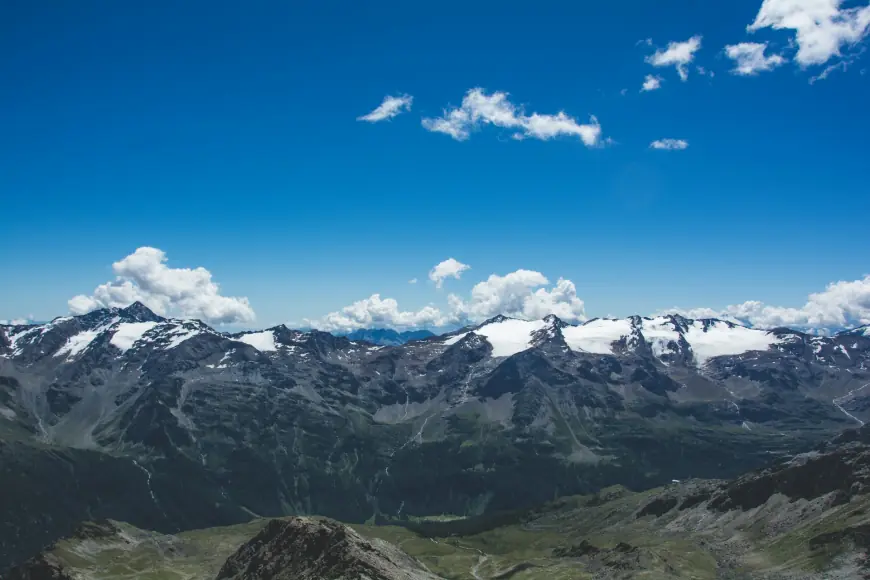Chulu East Peak Climbing: A High-Altitude Adventure in the Annapurna Region
Chulu East Peak (6,584 meters / 21,601 feet) is one of the most popular climbing peaks in Nepal’s Annapurna region. Located north of the Marsyangdi River, this peak offers a thrilling combination of trekking and mountaineering, making it an ideal choice for climbers looking to challenge themselves in a high-altitude environment. With its stunning views of the Annapurna and Manaslu ranges, Chulu East Peak is a rewarding adventure for those with some mountaineering experience.
Why Climb Chulu East Peak?
Chulu East Peak is a technically challenging climb tha
t requires basic mountaineering skills, including the use of crampons, ice axes, and ropes. However, it’s also an achievable goal for climbers with proper preparation and guidance. The climb is often combined with the classic Annapurna Circuit Trek, allowing you to experience the diverse landscapes and cultures of the region while working toward a high-altitude summit.
The sense of accomplishment you’ll feel when standing atop Chulu East Peak, surrounded by some of the world’s most iconic mountains, is unmatched. The climb also offers a unique opportunity to explore remote valleys, traditional villages, and serene high-altitude lakes.
Highlights of Chulu East Peak Climbing
-
Spectacular Mountain Views: From the summit, enjoy breathtaking views of the Annapurna range, Manaslu, Dhaulagiri, and other Himalayan giants.
-
Annapurna Circuit Trek: Combine the climb with the Annapurna Circuit, one of the most famous treks in the world, for a complete Himalayan experience.
-
Cultural Immersion: Pass through traditional villages like Manang and Pisang, where you can interact with the local Gurung and Tibetan communities.
-
High-Altitude Adventure: The climb involves glacier travel, steep snow slopes, and technical sections, providing a thrilling challenge.
-
Remote and Serene Landscapes: The trail takes you through lush valleys, arid high-altitude deserts, and pristine alpine environments.
Climbing Route and Itinerary
The Chulu East Peak climbing expedition typically takes around 18-20 days, including acclimatization and trekking. Here’s a sample itinerary:
Day 1-3: Drive to Besishahar and Trek to Chame
-
Drive from Kathmandu to Besishahar (760 meters).
-
Begin the Annapurna Circuit Trek, passing through villages like Jagat and Dharapani, and reach Chame (2,710 meters).
Day 4-6: Trek to Manang
-
Continue trekking through Pisang and Ngawal, enjoying stunning views of Annapurna II and III.
-
Reach Manang (3,540 meters), a picturesque village and a key acclimatization stop.
Day 7-9: Acclimatization and Preparation
-
Spend a couple of days in Manang for acclimatization.
-
Take short hikes to nearby viewpoints like Gangapurna Lake and Ice Lake.
Day 10-12: Trek to Chulu East Base Camp
-
Trek to Chulu East Base Camp (4,800 meters) via Yak Kharka and Ledar.
-
Set up base camp and prepare for the climb.
Day 13-15: Summit Attempt
-
Establish High Camp (5,400 meters) and prepare for the summit push.
-
Summit day involves glacier travel and steep snow slopes. From the top, enjoy panoramic views of the Himalayas.
-
Descend to Base Camp and continue trekking toward Thorong La Pass.
Day 16-18: Cross Thorong La Pass and Trek to Jomsom
-
Cross Thorong La Pass (5,416 meters), the highest point of the Annapurna Circuit.
-
Descend to Muktinath and trek to Jomsom (2,720 meters).
Day 19-20: Fly to Pokhara and Drive to Kathmandu
-
Take a scenic flight from Jomsom to Pokhara.
-
Drive or fly back to Kathmandu.
Best Time for Chulu East Peak Climbing
The best seasons for climbing Chulu East Peak are spring (March to May) and autumn (September to November). During these months, the weather is stable, the skies are clear, and the temperatures are moderate, making for ideal climbing conditions. Winter climbs (December to February) are also possible but require preparation for extreme cold and snow.
Difficulty Level
Chulu East Peak is graded as a PD+ (Peu Difficile Plus) climb, meaning it’s moderately difficult. The climb involves:
-
Glacier travel and crevasses
-
Steep snow and ice slopes (up to 45 degrees)
-
Basic rope and ice axe techniques
-
High-altitude challenges (altitude sickness is a risk)
While the climb is achievable for those with some mountaineering experience, it’s recommended to climb with an experienced guide or join a guided expedition.
Preparation and Fitness
Climbing Chulu East Peak requires a good level of physical fitness and mental preparedness. Training should include:
-
Cardiovascular exercises (running, cycling, swimming)
-
Strength training (focus on legs, core, and upper body)
-
Hiking with a loaded backpack
-
Acclimatization hikes to higher altitudes
Essential Gear for Chulu East Peak Climbing
Packing the right gear is crucial for a successful climb. Here’s a list of essentials:
-
Clothing: Base layers, insulated jacket, down jacket, waterproof shell, gloves, and thermal socks.
-
Footwear: Sturdy trekking boots and mountaineering boots with crampons.
-
Climbing Gear: Ice axe, harness, carabiners, ropes, and helmet.
-
Camping Gear: Sleeping bag (rated for -20°C), sleeping mat, and headlamp.
-
Other Essentials: Sunglasses, sunscreen, water purification tablets, and a first-aid kit.
Responsible Climbing
As with any adventure in the Himalayas, it’s important to practice responsible climbing. Follow Leave No Trace principles, respect local cultures, and support eco-friendly tourism initiatives. Hiring local guides and porters not only enhances your experience but also contributes to the local economy.
Conclusion
Chulu East Peak climbing is a high-altitude adventure that combines the thrill of mountaineering with the beauty of the Annapurna region. With its stunning views, challenging terrain, and cultural richness, it’s an experience that will stay with you forever. Whether you’re an experienced climber or looking to take your mountaineering skills to the next level, Chulu East Peak offers the perfect challenge. So, gear up, train hard, and get ready to conquer one of Nepal’s most iconic trekking peaks!
What's Your Reaction?
 Like
0
Like
0
 Dislike
0
Dislike
0
 Love
0
Love
0
 Funny
0
Funny
0
 Angry
0
Angry
0
 Sad
0
Sad
0
 Wow
0
Wow
0




















































